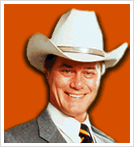"This disc is naught but a feast of the most engaging music from the early Italian baroque in and around 1630. A super programme of music which simply ignites passion from beginning to end as the performers explore works from one of the most exciting periods in the history of music, where we see the early development of highly decorative monody, sonata and concerto forms in their nascent state.
Lorenzo Ghielmi plays on an organ built in 1587 by Costanzo Antegnati, which was recently restored by Marco Fratti in 1996, with a sound that is spectacular to say the least. The first piece for organ solo is the Toccata Settima by Michelangelo Rossi (1601–1656). This is a piece full of remarkable passages that would have enthralled the listener as much then as it will now, particularly in the precipitous chromatic episode at the end of the work, itself preceded by a glut of digital dexterity clamouring for recognition. Aria Detto Balletto from Girolamo Frescobaldi (1583-1643) is a second solo piece displaying Ghielmi’s commanding sense of style, nothing is understated in the choice of registrations, the mixtures bringing a lively solution to music that is bright and lucid. Ghielmi further delights with two solo harpsichord contributions from Frescobaldi later in the recital upon aninstrument built by Tony Chinnery in 1989 after Carlo Grimaldi’s instrument of 1697.
Enrico Onofri is a superb practitioner of early Italian violin and vocal styles. Though more a violinist, as one will recognise on this disc, one cannot question his singing even if it is not as refined as some in this category of music; the important thing for me is the way his Italian origin lends the music its essential vitality. I feel that I am hearing the spirit in which this music was composed and should be sung. Onofri has much to teach performers of this music. For as much as his vocalisations are dramatic with the text one finds that spirit and drama shifted also to the violin; one hears the music speak in many exciting ways, from the choice of decoration, be that a trillo or ornamental vibrato, through to his beguiling phraseology. Onofri is a truly distinguished stylist.
Margret Köll’s contribution to this disc is just as vital. Her playing on the
Arpa Doppia a tre registri (Double Harp), made by Simon Capp in 2001 after a large 17th century Italian triple harp, is sensitive to all that surrounds her. The
Toccata Seconda & Ligature per l’arpa by Giovanni Maria Trabaci (1575-1647) is beautifully etched, adding a moment of repose in this recital.
Although the disc is housed in a carefully thought-out and unusual CD casing therein lies little information excepting the programme and the instrumental makes and names that I have already imparted above. For as much as that will be tantalising, I would still harry you to go out and acquire this recording that is a testament to three performers of outstanding stature in today’s world of historically informed performance practice".
The Organ Magazine01. Sonata Seconda a Violino Solo (G. Battista Fontana)
02. Canzona detta la Bernardinia (Girolamo Frescobaldi)
03. Toccata Setima (Michelangelo Rossi)
04. "Haec Dies Quam Fecit Dominus" - Motetto a Voce Sola (F. Turini)
05. Toccata Seconda & Ligature per l'Arpa (G. M. Trabaci)
06. "Exulta, Filla Sion" - A Voce Sola e Continuo (Claudio Monteverdi)
07. Sonata Prima à Sopran Solo (Dario Castello)
08. Aria detto Balletto (Girolamo Frescobaldo)
09. Sonata Seconda à Sopran Solo (Dario Castello)
10. Toccata per l'Elevazione (Girolamo Frescobaldi)
11. Toccata Prima (Girolamo Frescobaldi)
12. Cento Partite Sopra Passacagli - I Parte (Girolamo Frescobaldi)
13. O Quam Pulchra Es (Claudio Monteverdi)
14. Cento Partite Sopra Passacagli - II Parte (Girolamo Frescobaldi)
Lorenzo Ghielmi: organ, harpsichord
Enrico Onofri: violin, voice
Margret Köll: harp
Recorded with no processing at Chiesa S. Maria della Consolazione (Almenno San Salvatore, Italy) in July 2002. Released by Winter & Winter in 2003.part1 :
part2 @320































